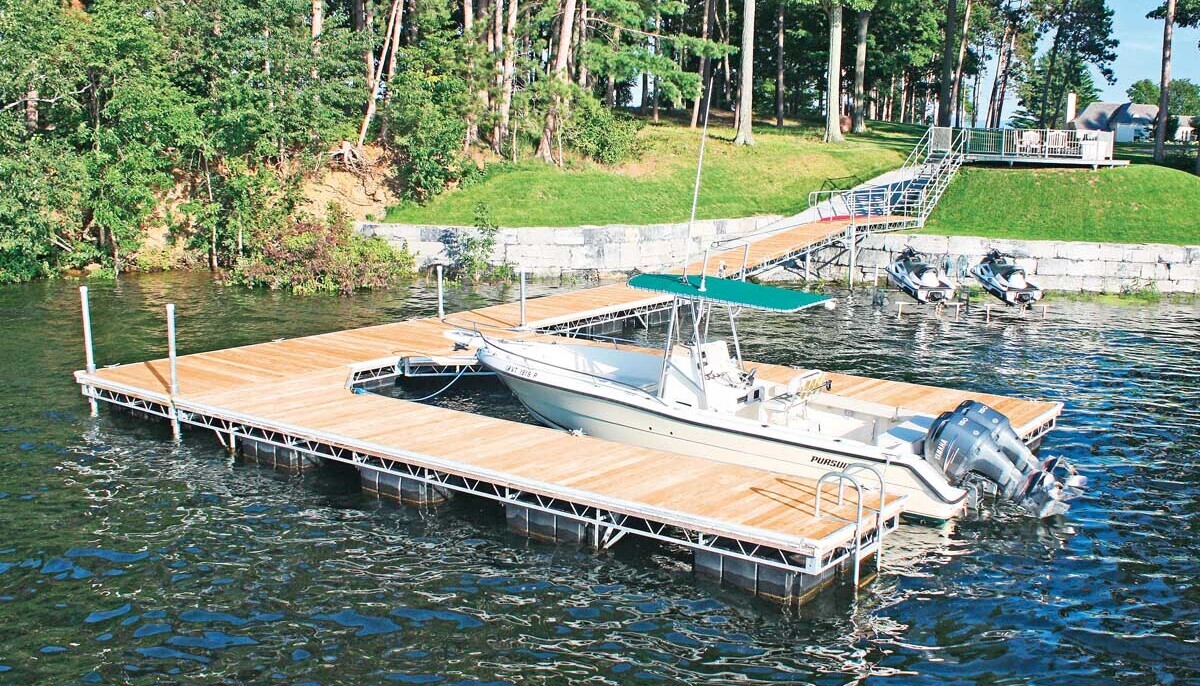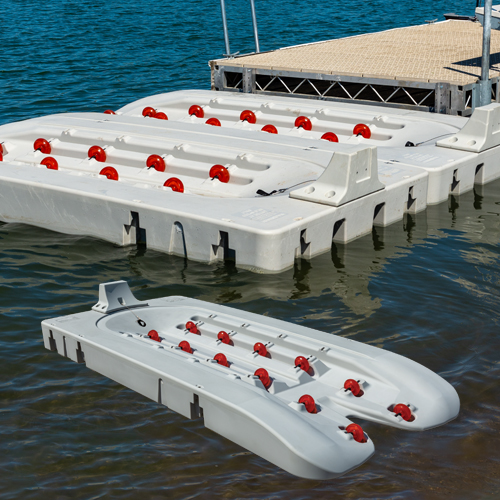Crafting Custom Solutions: Why a Floating Dock Builder is Important for Special Requirements
Create the Perfect Docking Remedy With Floating Docks
Floating docks present a versatile service for a variety of maritime needs, adapting seamlessly to rising and fall water levels and diverse vessel kinds. Their modular nature enables quick installment and moving, yet the selection of proper products and layout attributes is critical for guaranteeing both performance and aesthetic allure. As we explore the necessary aspects that add to the efficiency of floating docks, a number of essential variables pertaining to stability and maintenance will arise, questioning regarding just how to optimize your docking experience. The subsequent conversation will certainly light up these vital factors to consider.

Benefits of Floating Docks
Floating docks offer various advantages that make them an optimal option for numerous maritime applications. Unlike dealt with docks, floating docks surge and loss with the trend, ensuring consistent availability for vessels.
In addition, floating docks are normally much easier and quicker to mount contrasted to conventional fixed frameworks. Their modular design enables straightforward assembly and disassembly, assisting in upkeep and moving when needed. This flexibility is especially advantageous for momentary applications or in atmospheres where problems may alter.
Floating docks also often tend to be a lot more ecologically pleasant, as they reduce disruption to the seabed and surrounding water communities. Their resilient nature minimizes the risk of damage to marine life, advertising a healthier environment. These docks can be personalized to suit different vessel sizes, ensuring that they fulfill specific functional needs.
Ultimately, the mix of adaptability, convenience of setup, and environmental factors to consider makes floating docks a very efficient solution for a variety of maritime demands.
Selecting the Right Materials
Selecting the suitable products for floating docks is crucial to ensure sturdiness, long life, and security. The option of products straight influences the dock's efficiency in different environmental conditions, including exposure to water, sunlight, and potential wear from aquatic traffic.
Common materials used for floating docks consist of light weight aluminum, timber, and high-density polyethylene (HDPE) Light weight aluminum is lightweight, corrosion-resistant, and needs very little maintenance, making it an outstanding option for longevity. However, its preliminary expense can be greater contrasted to other materials.
Timber, while aesthetically appealing and offering a typical look, can be vulnerable to rot and pest damages if not correctly treated. Consequently, making use of pressure-treated wood or normally sturdy varieties like cedar or redwood can reduce these issues.
HDPE is a preferred selection because of its resistance to UV rays and chemicals, together with being eco-friendly. floating dock company. It is lightweight and readily available in various shades, enabling customization
Inevitably, the ideal material option will certainly depend upon details demands, consisting of budget, wanted aesthetics, and ecological considerations. Mindful analysis of these aspects will certainly result in a effective and durable floating dock read the full info here solution.
Style Factors To Consider for Stability
When making floating docks, making sure stability is a fundamental element that can considerably influence their capability and safety and security. Security in floating dock design is affected by different elements, including buoyancy, weight circulation, and the arrangement of parts. An ideal buoyancy system must use products that offer adequate lift while reducing weight. This equilibrium ensures that the dock stays above water, also under differing lots.
Weight distribution is important; uniformly dispersing tons across the dock avoids tilting and improves stability. Broader styles can provide boosted stability, particularly in harsh water conditions, while longer docks might require additional supports to avoid sagging.
An additional crucial consideration is the ecological effect, including wave action and wind. Incorporating functions such as sidewalls or skirting can aid reduce the effects of environmental pressures, keeping security in damaging problems. Ultimately, a combination of thoughtful layout, material choice, and understanding of environmental aspects will generate a drifting dock that satisfies both stability and security demands.
Installment Tips and Techniques

Next, secure the required licenses and stick to neighborhood laws, which might determine installation approaches and ecological considerations. If needed, involve a certified specialist experienced in floating dock setups. Usage high-quality materials developed for aquatic environments to enhance resilience and durability.
When placing the dock, straighten it identical to the shoreline to assist in very easy gain access to. Guarantee that the anchoring system is robust, using concrete blocks or helical anchors to maintain the dock against wind and wave action. It's essential to account for seasonal water degree variations, including possible ice movement in cooler climates.
During the installment, confirm the dock's floatation and security before finalizing the anchoring. Frequently inspect the installment for any type of signs of wear or damages. By complying with these suggestions and methods, you can accomplish a safe and secure, practical, and cosmetically pleasing floating dock installation that fulfills your needs.
Maintenance and Treatment Guidelines
Keeping and caring for floating docks is crucial to extending their life-span and ensuring risk-free usage. Routine inspections must be conducted to determine any kind of indicators of wear, damages, or marine growth. Search for fractures, loosened fittings, or tarnished areas on the dock's surface, as these problems can compromise architectural integrity.
Cleaning up is essential. Make use of a stress washing machine to eliminate algae, barnacles, and particles, which can accumulate with time. For persistent growth, think about environmentally pleasant cleansing representatives that will not hurt aquatic life.
Furthermore, examine the mooring lines and anchors regularly to guarantee they are secure and cost-free from corrosion. Replace any kind of frayed or damaged lines without delay to maintain stability.
During extreme weather condition, such as tornados or freezing problems, take preventive steps. Secure the dock with added mooring lines and, if feasible, remove any type of detachable parts to avoid damages.
Verdict
In conclusion, the implementation of floating docks provides a efficient and flexible docking solution appropriate for numerous maritime applications. With proper installment and regular maintenance, floating docks can give reliable and dependable docking experiences for a vast range of vessels.
As we check out the essential elements that add to the effectiveness of floating docks, numerous key aspects pertaining to security and maintenance will certainly emerge, elevating concerns concerning how to pop over to this web-site enhance your docking experience. Unlike fixed docks, floating docks rise and fall with the trend, guaranteeing regular ease of access for vessels.When making floating docks, making sure security is a fundamental facet that can considerably affect their capability and safety. Security in floating dock layout is affected by various variables, including buoyancy, weight distribution, and the setup of elements. Ultimately, a mix of thoughtful layout, product option, and understanding of ecological aspects will produce a floating dock that satisfies both stability and safety requirements.